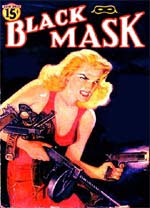“It perhaps was not the best way to get on, but I couldn’t help myself.”

Seeing George Melly off last week led to my pal mr j doing some digging to figure out what happened to Flook, the comic strip to which Melly contributed. Wally Fawkes was the artist on it and he would get his more wordy pals in to write it.
Here's an excellent BBC article on Wally Fawkes' retirement from cartooning, from 17 aug 2005. Farewell blues
Flook began life as a children's strip in 1949, but over the years, and with the help of Humphrey Lyttleton, George Melly, Barry Norman, Barry Took and Keith Waterhouse, among others, it became a social and political satire very much for the adults.
Despite its following - which included Baroness Thatcher who said it was "quite the best commentary of the politics of the day" - the Daily Mail decided in 1984 it no longer wanted Flook. The only warning its readers got was a strip in which a blue plaque appeared on the wall: "Flook lived here 1949-1984." Robert Maxwell saved the strip for the Mirror at his wife's behest, but only briefly, and with that, a unique record of post-War Britain ended.
But Trog's political commentary went on for another 20 years.. Now failing eyesight has forced him to put down his pen at the age of 81.
Trog calls it a day from Camden New Journal July 22 2005
Wally has always lived a double life. Being a virtuoso jazz musician as well as a talented artist meant he had two callings. He says: “To cartoonists, I was always the one who played jazz. To musicians, I was always the one who drew cartoons.”
Flook’s adventures with his friend Rufus became an overnight hit. At a reception soon after its launch, Lady Rothermere approached Trog and asked: “How is your lovely little furry thing?”
Trog replied: “Fine thank you. How is yours?”
“I quickly left,” he says. “It perhaps was not the best way to get on, but I couldn’t help myself.”
This Melly obituary at Barista last week gives George's contribution to the strip as a fifteen year run. It also shows a vintage sample. As for the samples above: I used to pick up the Daily Mail circa 1970 for the Peanuts on the back, and I'd save the other strips too, Flook, Fred Bassett and Tiffany Jones, if memory serves, from the entertainments page inside. Being 14 I never really understood Flook at the time, and I failed to hold onto the cuttings. So to my horror I found that the only tear sheet in my historical files is this one, a page from the Penguin book of comics, split in two here, which I guess is enough of an antique in itself for these to have not been seen by most of my readers. At left is a Punch cover by Fawkes from 1977.
As for the samples above: I used to pick up the Daily Mail circa 1970 for the Peanuts on the back, and I'd save the other strips too, Flook, Fred Bassett and Tiffany Jones, if memory serves, from the entertainments page inside. Being 14 I never really understood Flook at the time, and I failed to hold onto the cuttings. So to my horror I found that the only tear sheet in my historical files is this one, a page from the Penguin book of comics, split in two here, which I guess is enough of an antique in itself for these to have not been seen by most of my readers. At left is a Punch cover by Fawkes from 1977.
***********
I wonder if it was his sense of humour rather than his eyesight that Wally was losing. Eh? nahhh.
hayley campbell sent this link under her own headline 'Oldies to get humour bypass.'
Grumpy old people 'can't help it'-BBC News- 13 July
People aged over 65 may find it harder to understand jokes. Grumpy old men may not be able to help it, as age could affect their sense of humour, scientists have found. A study by Washington University in St Louis found older people find it harder to understand jokes than students. The authors say the finding should be taken seriously as laughing has been linked to health benefits such as boosting circulation.
Reading the comments on this, lots of grumpy oldies on the defensive. Frankly, i think there could well be something in it. I've observed it over the years. People generally lose their levity as they get one day closer to death. And I don't exclude myself. I bet you remember me when I was a bright and cheerful chappy.
And finally. If, on your relelntless tread toward that last day of mortal irritability, you want to attempt to a note of gaiety, our pal Nathalie sends this link: PUSHING DAISIES, a mortuary novelty shop.
Skull Wedding Toasting Glasses: Love Never Dies
Bride and Groom Skulls celebrate love everlasting. These handpainted champagne flutes feature a skull bride and groom surrounded by a band of bones and flowers. How romantic!
Food To Die For - recipes and more!
The Recipe's To Die For cookbook contains 180 pages of recipes, etiquette, and anecdotes. It is fully indexed and profusely illustrated with black-and-white photographs of the Old City Cemetery. These books are signed by the author.
Coffin Luggage
Now traveling in style is is not a problem with this unbelievable coffin shaped carry on bag. This is the most amazing piece of luggage i'v ever seen! Made from 100% leather...
Hayley! I don't get any of this. Come down here and explain it to me.
Labels: classic strips(1)

























